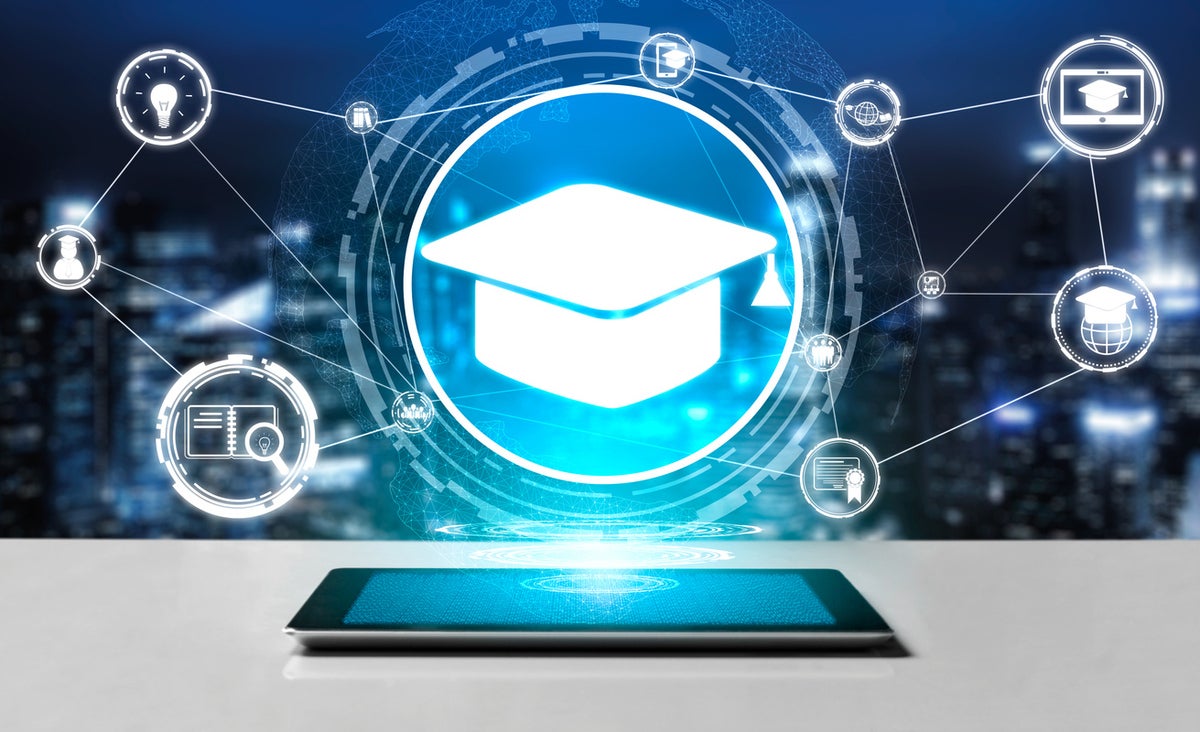
As COVID-19 cases ebb and flow, education professionals continue to be under intense pressure to implement technologies that support flexible learning models.
While this is a formidable task, an even greater challenge lies ahead. Preparing for a hybrid education model that combines in-class learning with remote learning is likely to emerge as a constant expectation (or operational shift) from the pandemic. This emerging model will require on access to digital tools and systems that can adapt to changing circumstances and the evolving needs and expectations of students and teachers.
“Simply getting on a video with students is not cutting it,” says Jaime Donally, an education consultant specializing in staff development and training in immersive technology. “They aren’t learning anything by just sitting there and listening to a lecture online. Students need to interact with the content the way they do in a classroom when they’re face to face with their teacher.”
In addition to providing educators with the skills to teach in remote settings, school districts will need to equip students with the right digital tools to help them learn most effectively, even as they cope with budget constraints. Schools might best start by engaging with students, teachers, families, and the community to understand which technologies will best facilitate learning.
Another consideration: In response to the new demands for learning, many schools across the nation focused on one-on-one learning while remote. As they transition back to a hybrid world, IT and education leaders will have to decide whether that individual learning model is sustainable. Are they prepared to be one-in-one with all those devices on school grounds? Do they have a plan to deal with increased network stresses that model will bring? This is critical, as education and IT leaders will be under pressure not to waste the huge technology investment made over the past 6 months.
A new access model that serves all students also must eliminate the digital divide created not only by lack of access for some families to devices, but by poor or even non-existent Internet connectivity or – in the case of many communities in remote or mountainous areas – unreliable cell service. This may require school systems to provide wireless hot spots for homes without a reliable Internet connection.
One option that some school districts pursued in the early stages of the pandemic was to partner with local Internet providers to offer free or low-cost access to some families. In addition, companies such as Dell Technologies are helping schools integrate collaborative learning programs and providing them with the tools they need to make these programs work for students and teachers and run effectively in their IT ecosystems.
Along with what fairly can be described as massive disruption to the educational system comes an element of risk. Opening up and scaling education networks can allow bad actors to take advantage of new or undetected vulnerabilities. It’s simply not reasonable, for example, to assume that students are using secure devices or following security best practices. Thus, IT decision-makers in school systems should consider technologies that ensure secure access to network resources by students, instructors, and third-party stakeholders.
Educational institutions and teachers around the world were faced with a crisis in 2020. Many responded admirably, despite a lack of planning and preparation. Now they have time to learn from this experience and forge a hybrid learning strategy that relies on digital technologies, community partnerships, and input from students and educators.
"strategy" - Google News
November 06, 2020 at 04:53AM
https://ift.tt/3jZaEE5
A Hybrid Learning Strategy is the Way of the Future - CIO
"strategy" - Google News
https://ift.tt/2Ys7QbK
https://ift.tt/2zRd1Yo
Bagikan Berita Ini















0 Response to "A Hybrid Learning Strategy is the Way of the Future - CIO"
Post a Comment